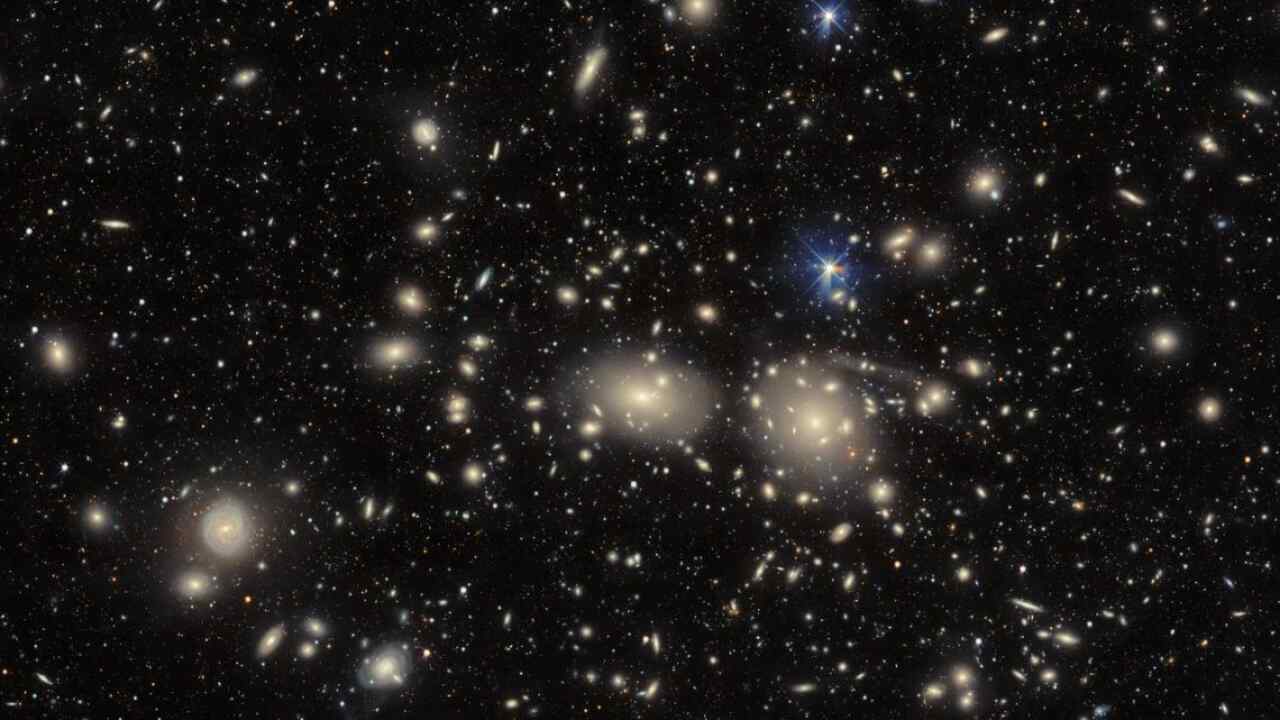The Universe really seems to be expanding fast. Too fast, even.
A new measurement confirms what previous — and highly debated — results had shown: The Universe is expanding faster than predicted by theoretical models, and faster than can be explained by our current understanding of physics.
This discrepancy between model and data became known as the Hubble tension. Now, results published in the Astrophysical Journal Letters provide even stronger support to the faster rate of expansion.
“The tension now turns into a crisis,” said Dan Scolnic, who led the research team.
Determining the expansion rate of the Universe — known as the Hubble constant — has been a major scientific pursuit ever since 1929, when Edwin Hubble first discovered that the Universe was expanding.
Scolnic, an associate professor of Physics at Duke University, explains it as trying to build the Universe’s growth chart: we know what size it had at the Big Bang, but how did it get to the size it is now? In his analogy, the Universe’s baby picture represents the distant Universe, the primordial seeds of galaxies. The Universe’s current headshot represents the local Universe, which contains the Milky Way and its neighbors. The standard model of cosmology is the growth curve connecting the two. The problem is: things don’t connect.
“This is saying, to some respect, that our model of cosmology might be broken,” said Scolnic.
Measuring the Universe requires a cosmic ladder, which is a succession of methods used to measure the distances to celestial objects, with each method, or “rung,” relying on the previous for calibration.
The ladder used by Scolnic was created by a separate team using data from the Dark Energy Spectroscopic Instrument (DESI), which is observing more than 100,000 galaxies every night from its vantage point at the Kitt Peak National Observatory.
Scolnic recognized that this ladder could be anchored closer to Earth with a more precise distance to the Coma Cluster, one of the galaxy clusters nearest to us.
“The DESI collaboration did the really hard part, their ladder was missing the first rung,” said Scolnic. “I knew how to get it, and I knew that that would give us one of the most precise measurements of the Hubble constant we could get, so when their paper came out, I dropped absolutely everything and worked on this non-stop.”
To get a precise distance to the Coma cluster, Scolnic and his collaborators, with funding from the Templeton foundation, used the light curves from 12 Type Ia supernovae within the cluster. Just like candles lighting a dark path, Type Ia supernovae have a predictable luminosity that correlates to their distance, making them reliable objects for distance calculations.
The team arrived at a distance of about 320 million light-years, nearly in the center of the range of distances reported across 40 years of previous studies — a reassuring sign of its accuracy.
“This measurement isn’t biased by how we think the Hubble tension story will end,” said Scolnic. “This cluster is in our backyard, it has been measured long before anyone knew how important it was going to be.”
Using this high-precision measurement as a first rung, the team calibrated the rest of the cosmic distance ladder. They arrived at a value for the Hubble constant of 76.5 kilometers per second per megaparsec, which essentially means that the local Universe is expanding 76.5 kilometers per second faster every 3.26 million light-years.
This value matches existing measurements of the expansion rate of the local Universe. However, like all of those measurements, it conflicts with measurements of the Hubble constant using predictions from the distant Universe. In other words: it matches the Universe’s expansion rate as other teams have recently measured it, but not as our current understanding of physics predicts it. The longstanding question is: is the flaw in the measurements or in the models?
Scolnic’s team’s new results adds tremendous support to the emerging picture that the root of the Hubble tension lies in the models.
“Over the last decade or so, there’s been a lot of re-analysis from the community to see if my team’s original results were correct,” said Scolnic, whose research has consistently challenged the Hubble constant predicted using the standard model of physics. “Ultimately, even though we’re swapping out so many of the pieces, we all still get a very similar number. So, for me, this is as good of a confirmation as it’s ever gotten.”
“We’re at a point where we’re pressing really hard against the models we’ve been using for two and a half decades, and we’re seeing that things aren’t matching up,” said Scolnic. “This may be reshaping how we think about the Universe, and it’s exciting! There are still surprises left in cosmology, and who knows what discoveries will come next?”
Reference: Scolnic, D., Riess, A.G., Murakami, Y.S., Peterson, E.R., Brout, D., Acevedo, M., Carreres, B., Jones, D.O., Said, K., Howlett, C. and Anand, G.S., 2025. The Hubble Tension in our own Backyard: DESI and the Nearness of the Coma Cluster. The Astrophysical Journal Letters, 979, L9. DOI: 10.3847/2041-8213/ada0bd
